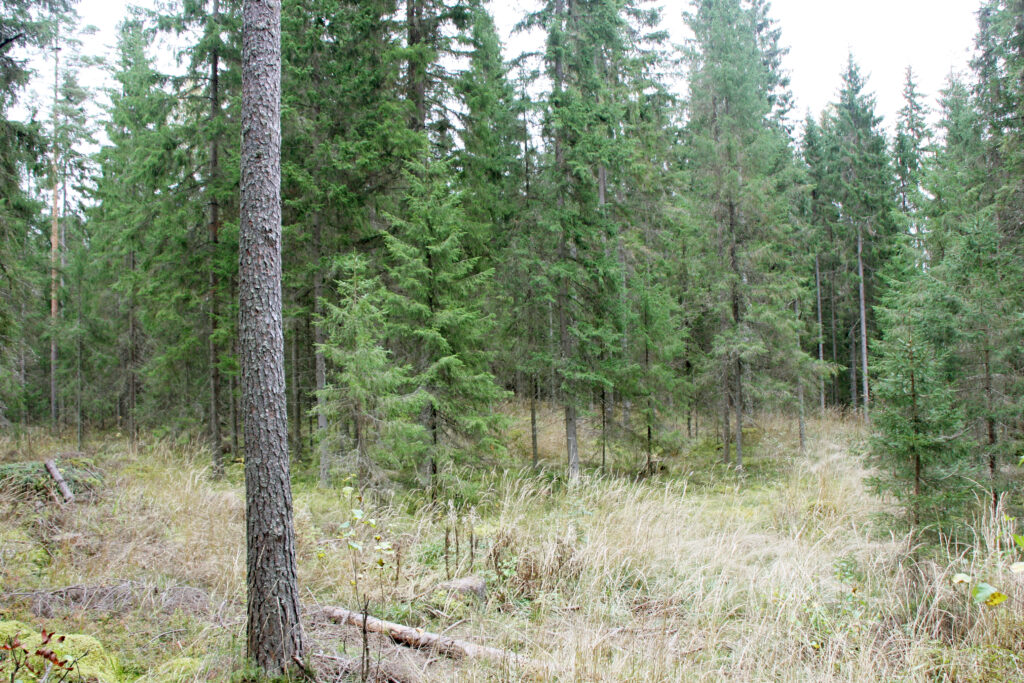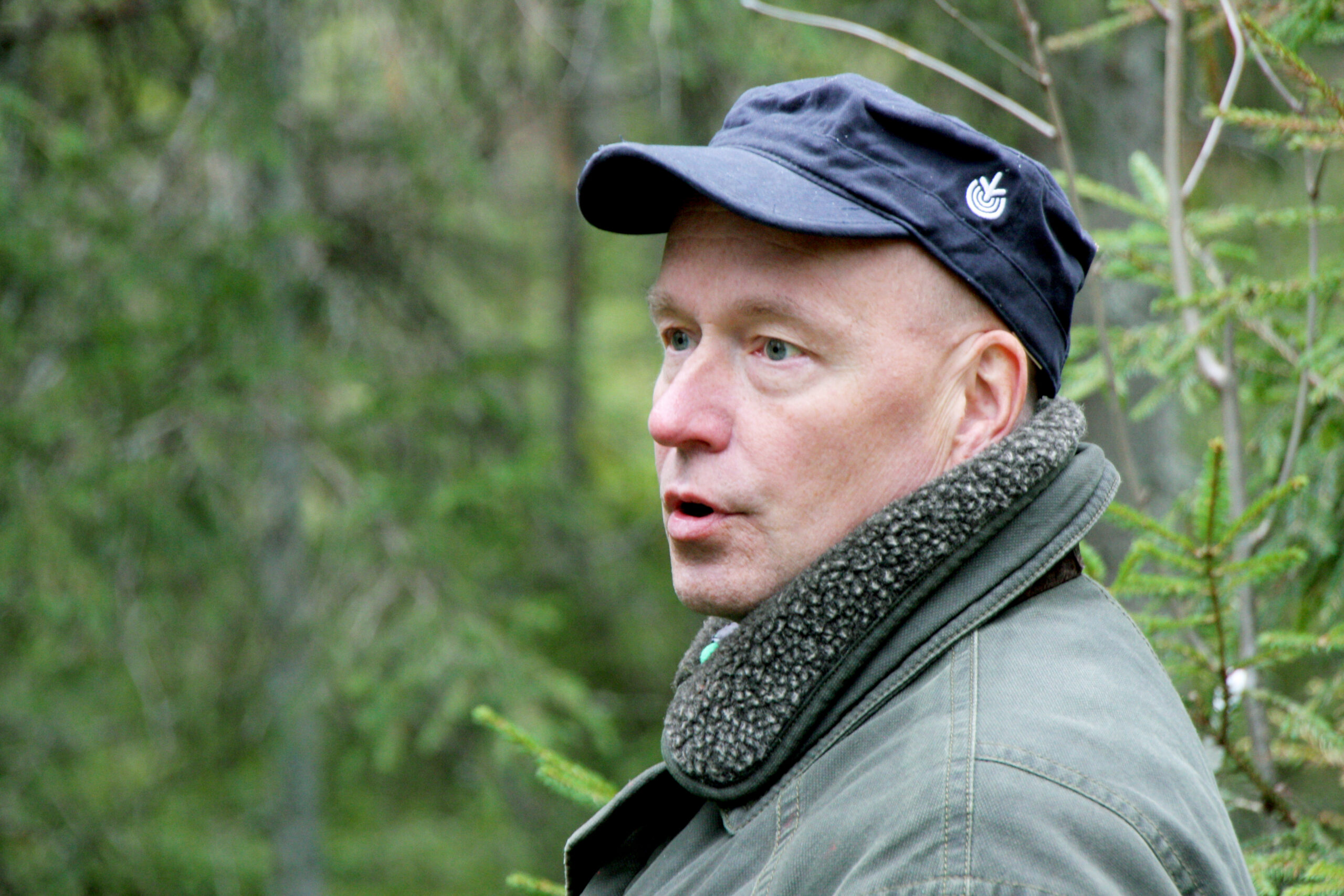Varying results from continuous-cover silviculture

Natural seedlings began to grow relatively well on a small-diameter logging area in northern Finland, according to a study by the Natural Resources Institute Finland. The results on biodiversity were also surprising, though in another way.
”Was planting a waste of effort,” asked Mr Sauli Valkonen, Senior Researcher at the Natural Resources Institute Finland, and answered that this may have been the case. A research study carried out in the Suomussalmi municipality in northern Finland showed that a small-scale logging would result in a new seedling stand even without soil preparation, although preparation improved the result.
The results are significant because the impact of continuous-cover silviculture on forest regeneration had so far not been researched in northern Finland. This study was carried out on sites established as early as in 1997.
“This is an important question in northern Finland, where it is difficult to achieve more than a two-percent level of productivity in forestry,” Valkonen said.
The research site in question is classified as old mesic heath forest and previously carried a mature spruce stand. The size of the eight logging areas was 0.1–0.4 hectares. Of them, five were left without soil preparation and planting, while three were ploughed up and planted.
A nursery seedling grew more rapidly

In addition to new seedlings springing up, enough of them were viable for further growing: in the prepared and cultivated areas they numbered 2,000 per hectare and, in areas relying on natural regeneration without preparation, 1,700 per hectare. “And planting brought practically no advantage, because the result without planting was more or less the same,” said Valkonen.
There were some differences in seedling height. “Planted seedlings were taller than natural ones, but the difference only corresponded to a growth of 2–3 years. This was the advantage gained by planting. Anyone can assess whether this was profitable,” said Valkonen. In Suomussalmi, it takes about one hundred years for a softwood tree to reach maturity in good conditions.
According to Valkonen, the results of similar comparisons in southern Finland are even less advantageous, because grasses grow so much better in southern regeneration areas. “It is also clear that the good results were not due to the seedlings being already there before logging. No, 99 percent of them grew up after the logging,” says Valkonen.
However, Valkonen does not want to generalize the results, not even to all of northern Finland. “I would not like to say anything about regeneration rates on flat lands covered by thick moss in northern Lapland,” says Valkonen.
Harvesting brings little profit
There is also new information as regards the profitability of wood harvesting under continuous-cover silviculture. “We have previously found that the productivity of harvesting is ten percent less than with periodic-cover silviculture,” says Mr. Asko Poikela, Senior Researcher at the research company Metsäteho.
According to Poikela, another important factor is that the actual operating time of forestry machines is short. In periodic-cover silviculture, due to the small logging areas in Finland, the machines must be moved to new logging areas every third day, which is considered a critical limit for profitability.
In continuous-cover silviculture machines may have to be moved even daily. “And whenever you are moving a machine, it is out of productive work,” says Poikela.
Downtime is also increased by the machine moving from one small logging area to another. “These moves take a long time,” says Poikela.
Poikela also questioned whether it is at all possible to plan the harvesting operation sensibly in continuous-cover silviculture. “It may be possible for the first logging, but in the second one, you should log the edges of the previous clearing and in the third one, the edges of the second one. It turns out to be practically impossible to avoid creating narrow strips of mature stands, which should be prevented according to the guidelines,” says Poikela.
Logging increased the number of beetle species

Mr. Juha Siitonen, Senior Researcher at the Natural Resources Institute Finland, summed up the results of his beetle study as follows: “The more intensively you log the forest, the more beetle species there will be.”
The loggings he studied included, among others, selective, small-scale and retention tree loggings; in the latter case significantly more retention trees are left in comparison to normal Finnish regeneration fellings.
The study findings were something of a surprise. Siitonen reported that there was practically no decrease in the number of beetle species found before the logging. However, a significant number of totally new beetle species were found after logging.
The ”new” species are ones usually found in commercial forests. As regards threatened species, only one was found prior to logging, and two after it.
However, Siitonen felt that the follow-up period was too short. “The next inventories will be carried out in 2016 or 2017, six or seven years after logging,” he said.
The occurrence of birds and ants on logging sites has also been researched, though their numbers prior to logging have not been established. However, as regards ants of the Formica rufa group, which build hills above ground, their colonies may suffer or even die if they are left in the centre of a large logging area. On the other hand, especially when the colony is young, it needs the warmth of sunlight to survive.
This is why small-diameter logging sites or the edges of logging sites in general are good places to establish a colony. Later, when the composting process inside the hill begins, the hill itself produces the warmth needed to survive.
The participants in the project on disturbance dynamics were the state-owned forestry company Metsähallitus, the Natural Resources Institute Finland, the universities of Helsinki and Eastern Finland and the research company Metsäteho. For the time being, results are only available on the forest compartment level, but in the future, results on larger units will be published.
Kirjoita kommentti